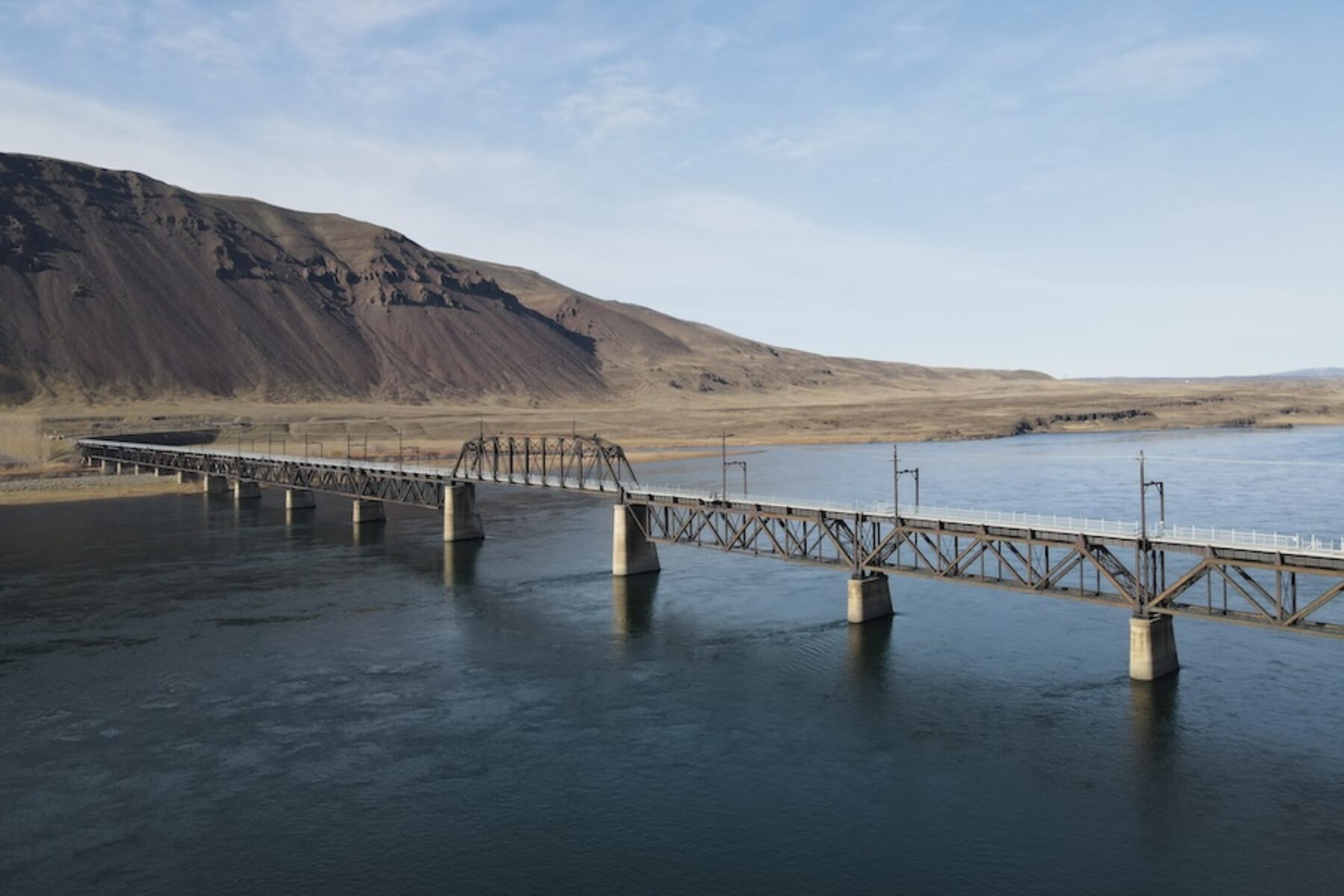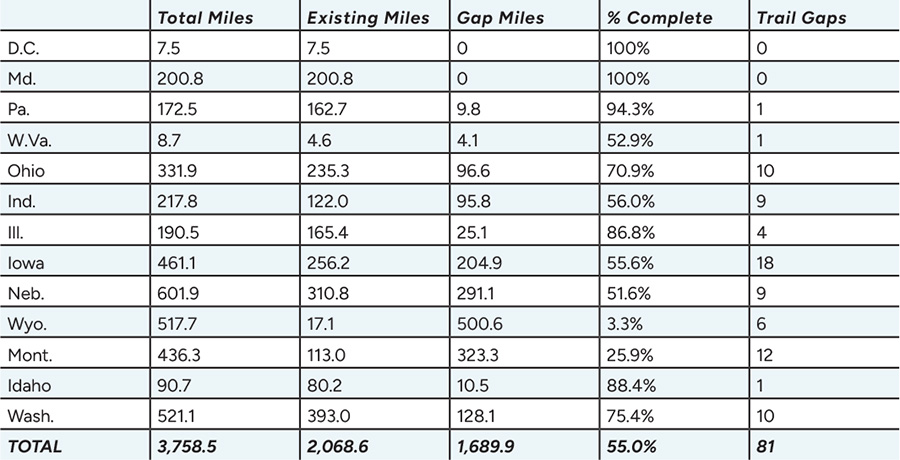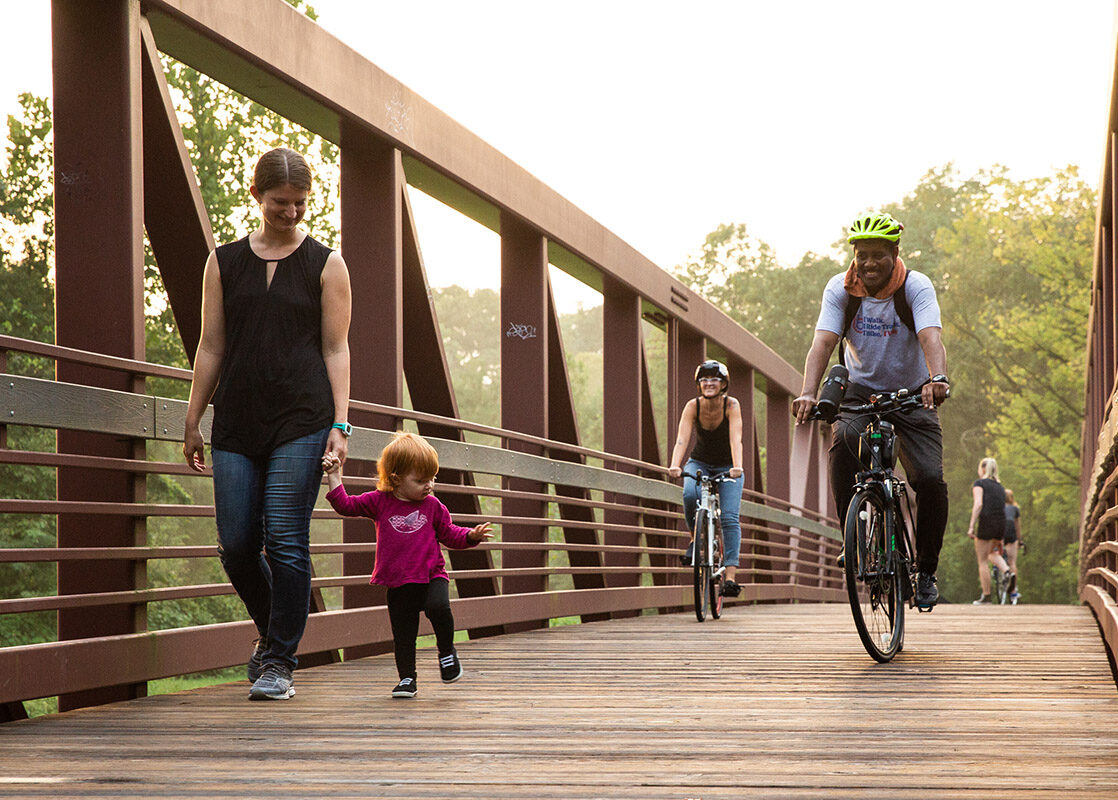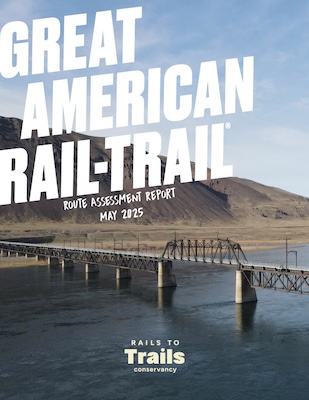Great American Rail-Trail Route Assessment 2025

Great American Rail-Trail Route Assessment
The Great American Rail-Trail Route Assessment 2025 defined the preferred route of the Great American Rail- Trail as more than 3,700 miles—with 2,069 miles of existing trails and 1,690 miles of trail gaps.
View the Executive Summary below.
Executive Summary
The Great American Rail-Trail Vision
Imagine pedaling across the entire country on a safe, seamless and scenic pathway—or walking a local trail that connects you to historic routes from across the country. You’re enthralled in the experience of exploring America’s heritage—its potential, its beauty and bounty, its people and places. Consider the intimacy of taking in all the country has to offer from the most personal vantage point: the trail.
Spanning more than 3,700 miles, the Great American Rail-Trail promises an all-new American experience. The trail travels through 12 states and the District of Columbia, connecting trail users and communities from Washington to Washington. As the first cross-country trail of its kind, the “Great American” will be hosted primarily by rail-trails—public paths created from former railroad corridors—as well as other multiuse trails, offering a route across the nation that is completely separated from vehicle traffic. Upon its completion, the Great American will serve more than 50 million people within 50 miles of its route, as well as the millions from across the country and the world who will explore America’s diverse places via the trail.
The potential for a trail of this magnitude has been on Rails to Trails Conservancy’s radar since the early days of RTC, almost four decades ago, when co-founder David Burwell first dreamed of a trail for the nation. It would not be long before this dream would transform into vision, as RTC began to track rail-trail development in the 1980s, and the skeleton for a cross- country trail began to take shape. While the team at RTC “always knew” the potential for this trail, it also knew the significant undertaking and commitment required to get it done, thus setting two criteria for determining the trail’s potential: a viable route that was more than 50% complete, and a pathway across the west.
Washington, D.C.—as the nation’s capital and the home to RTC’s national headquarters—had always been earmarked as the eastern terminus for a cross-country trail. In 2017, preliminary GIS analyses revealed multiple potential cross-country route options between Washington, D.C., and Washington State that were more than 50% complete. It was then that RTC knew the Great American Rail-Trail had the potential to become reality. Since then, the team at RTC has met with hundreds of trail partners along the preferred route for the trail as well as state agencies to align this vision with state and local trail priorities.
The Great American Rail-Trail marks RTC’s most ambitious trail project to date and the single greatest trail project in the history of the country; its future is possible thanks to the hard work of the local trails community and countless volunteers, as well as the support and enthusiasm of each of the states it crosses.
The “Great American” Impact
Now—and at an even grander scale when complete—the Great American Rail-Trail will magnify the economic, social and community benefits that trails have delivered to people and places for decades. For example, a study produced by RTC in 2022 found that the Great American Rail-Trail has the potential to generate an estimated $229.4 million annually in new visitor spending as a result of outdoor tourism and local business patronage. As a large-scale, cross-country trail network, the Great American has the potential to generate millions of new dollars a year for communities along its route by increasing trail connectivity between places, catalyzing new investment in trailside businesses and commercial opportunities, and enhancing tourism as well as outdoor recreation, which, according to a report by the Outdoor Recreation Roundtable, is currently the fastest-growing industry in the country.
As new trails and connecting corridors are developed, communities along the Great American route will also gain safer walking and biking access to the places they want to go—like jobs, public transportation and shopping centers. All who enjoy the Great American will have better access to the outdoors as the trail intersects with green space within communities and connects to public lands along the route.
The Preferred Route of the “Great American”
Now—and at an even grander scale when complete—the Great American Rail-Trail will magnify the economic, social and community benefits that trails have delivered to people and places for decades. For example, a study produced by RTC in 2022 found that the Great American Rail-Trail has the potential to generate an estimated $229.4 million annually in new visitor spending as a result of outdoor tourism and local business patronage. As a large-scale, cross-country trail network, the Great American has the potential to generate millions of new dollars a year for communities along its route by increasing trail connectivity between places, catalyzing new investment in trailside businesses and commercial opportunities, and enhancing tourism as well as outdoor recreation, which, according to a report by the Outdoor Recreation Roundtable, is currently the fastest-growing industry in the country.
As new trails and connecting corridors are developed, communities along the Great American route will also gain safer walking and biking access to the places they want to go—like jobs, public transportation and shopping centers. All who enjoy the Great American will have better access to the outdoors as the trail intersects with green space within communities and connects to public lands along the route.

ACKNOWLEDGMENTS
This report, the “Great American Rail-Trail Route Assessment,” was originally published by Rails to Trails Conservancy (RTC) in May 2019. This updated version was published in May 2025.
Suggested citation:
Rails to Trails Conservancy. Great American Rail-Trail Route Assessment. Washington, DC: Rails to Trails Conservancy, 2025.
RTC staff and consultants who provided expertise and skills necessary to the production of this report include:
Amy Ahn, Kevin Belle, Ken Bryan, Sharon Congdon, Leah Gerber, Rachel Goff, Andrea Holliday, Brandi Horton, Amy Kapp, Joe LaCroix, Kevin Mills, Yvonne Mwangi, Eric Oberg, Kelly Pack, Aishwarya Shrestha, Laura Stark, Derek Strout, Liz Thorstensen and Marianne Wesley Fowler.
ABOUT RAILS TO TRAILS CONSERVANCY
RTC is the nation’s largest trails organization—with a grassroots community more than 1 million strong—dedicated to connecting people and communities by creating a nationwide network of public trails, many from former rail lines. RTC serves as the national voice for the nation’s 40,000+ miles of rail-trails and multiuse trails, and 8,000+ miles of potential rail-trails ready to be built, with the goal of creating more walkable, bikeable communities in America. Connect with RTC at
railstotrails.org and @railstotrails on Facebook, Twitter and Instagram.
View the trails along the route at traillink.com/great-american-rail-trail and learn more about the Great American Rail-Trail at greatamericanrailtrail.org and RTC’s network-building initiative at trailnation.org. Follow the Great American Rail-Trail at @greatamericanrailtrail on Facebook and Instagram.

Donate
Everyone deserves access to safe ways to walk, bike, and be active outdoors.
